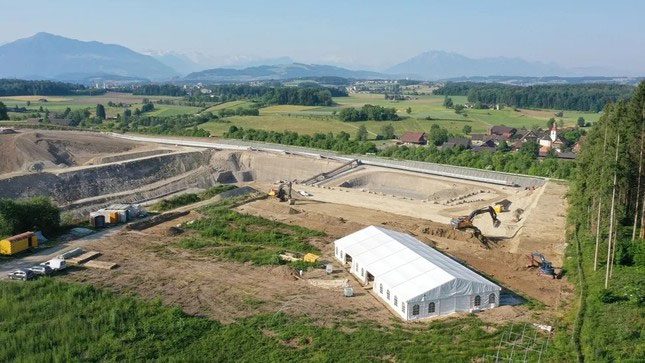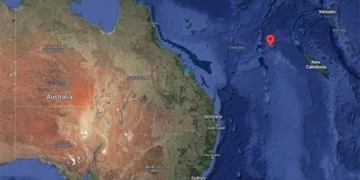Archaeologists in Switzerland have uncovered remnants of 2,000-year-old Roman walls at the foot of the Alps. These walls, which once protected a Roman construction complex, were discovered during the excavation of a gravel pit in Cham, located in the canton of Zug, central Switzerland.
Roman Activity in Switzerland
To date, archaeologists have also unearthed fragments of plaster walls; iron nails; pieces of gold, possibly from jewelry; and artifacts such as bowls, grinding stones, glassware, porcelain, and amphorae.

Excavation tent at the Cham-Äbnetwald excavation site. (Photo: ADA Zug, David Jecker).
These findings represent a significant archaeological phenomenon in the area and may shed light on Roman activities in central Switzerland, officials from the Office for the Preservation of Monuments and Archaeology stated in a statement.
Gishan Schaeren, head of the Prehistoric and Historical Archaeology Department, noted: “Similar-sized Roman buildings were last excavated in Cham-Heiligkreuz nearly 100 years ago. We were also surprised that the upper bricks were even visible above ground.”
The walls span an area of at least 500 m2. However, it remains unclear how the Romans utilized this site, including whether it served as an “overlook villa or a temple building,” according to Christa Ebnöther, a professor of archaeology specializing in Roman provinces at the University of Bern.
Evidence of Elites
During the excavation, archaeologists found evidence of elites at the site, with artifacts including imported Roman tableware known as terra sigillata—which translates to “sealed earth” in Latin—and intricately detailed glass vessels.
Meanwhile, the research team noted that amphorae, typically used to hold liquids such as wine, olive oil, and fish sauce, indicate that the Romans in the area were engaged in trade with Mediterranean peoples.
Archaeologists also discovered several bronze and brass coins, including a silver denarius minted by Julius Caesar in the first century BC, depicting an elephant trampling what appears to be a serpent or dragon.
The discovery of Roman walls is not the first ancient find in the area. Previous archaeologists have uncovered remnants of a Bronze Age settlement, graves from the late Bronze Age, and several coins from the time of the Celts, a tribe that later plundered Rome.


















































